Hannah Fake
Over the last two posts we have discuss how many species have left the Sawtooths for warmer weather and more plentiful food, while other animals are curled up deep underground hibernating through the coldest months. Today we’ll focus on critters who are active all winter long in the Sawtooths. They endure the cold, dark months of winter.
These animals have many unique adaptations to help them survive harsh climates. Pika, wolverines, mountain goats, Clark’s nutcrackers, and ravens can all be found year-round in the Sawtooths. They stay active all winter, although some may be easier to spot than others!

It is unlikely you will see pika during the winter, but they are not hibernating and they have not migrated. They endure the winter nestled beneath deep snow and rocks. Pikas are built to be cold animals. They are actually not a rodent, not a mouse or hamster, but a rabbit. They are the smallest members of the rabbit family. These little rock rabbits have much smaller ears than most rabbits to help conserve heat in their cold habitat. Do your ears get cold when they aren’t covered in the winter? Imagine a jackrabbit’s huge ears in winter. There is a reason they live in hotter climates, as jackrabbits cool themselves through their ears. A pika’s stocky body, short legs, and short ears, along with a thick coat of fur, helps insulate them from the cold. Pikas also rely on the snow for insulation. Once there is a thick snowpack pika can comfortably scurry underneath the snow and rock to forage and access their hay piles. The pikas are protected from icy winds and blowing snow by a thick white blanket.

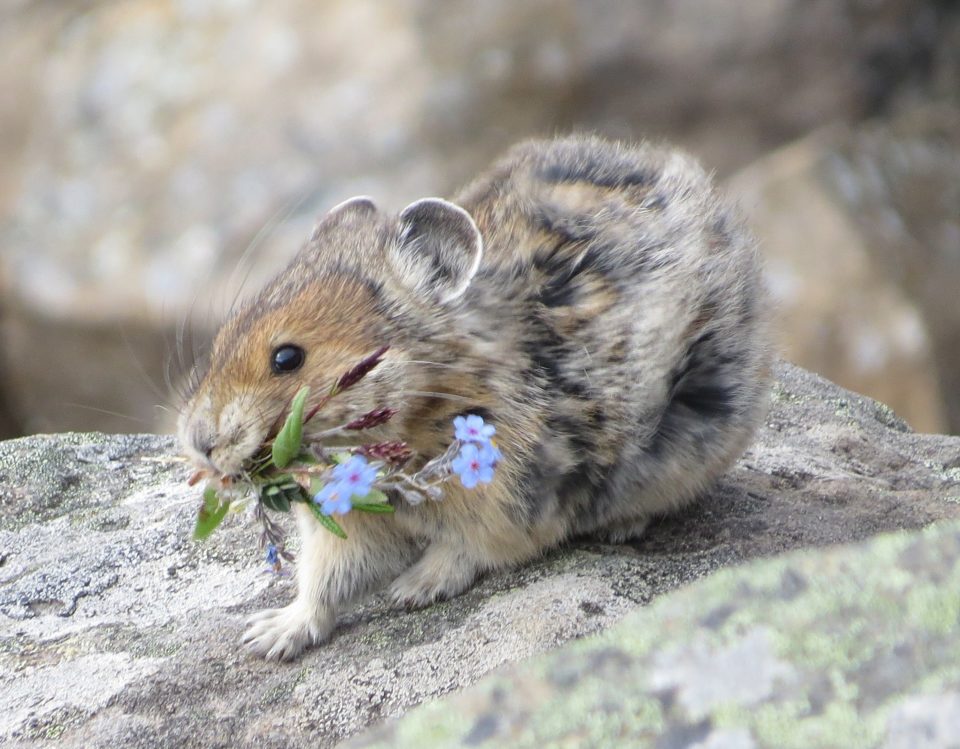
Wolverines may be the most famed creatures for being fierce, for climbing straight over mountains, and for living in some of the harshest environments. We’ve discussed wolverines recently in our blogs but they are just too special to pass up when discussing animal endurance. Wolverines thrive in cold snowy climates and they NEED the cold and snow to survive. Wolverines, like all creatures that spend the winter in cold climates, have a thick coat of fur. Wolverines are unique in the fact that they have hydrophobic fir, meaning it is water and frost resistant. They are stocky animals belonging to the weasel family, even though they resemble a bear in form. Wolverines may seem to be the polar opposite of pika but, just like pika, their small ears and short legs help conserve heat! As mountain climbers use crampons in the snow and ice to travel, so do wolverines. However, a wolverine’s crampons are attached right to their feet in the form of long claws. Their big paws and claws give them traction as they climb through the mountains and can also help them take down prey.
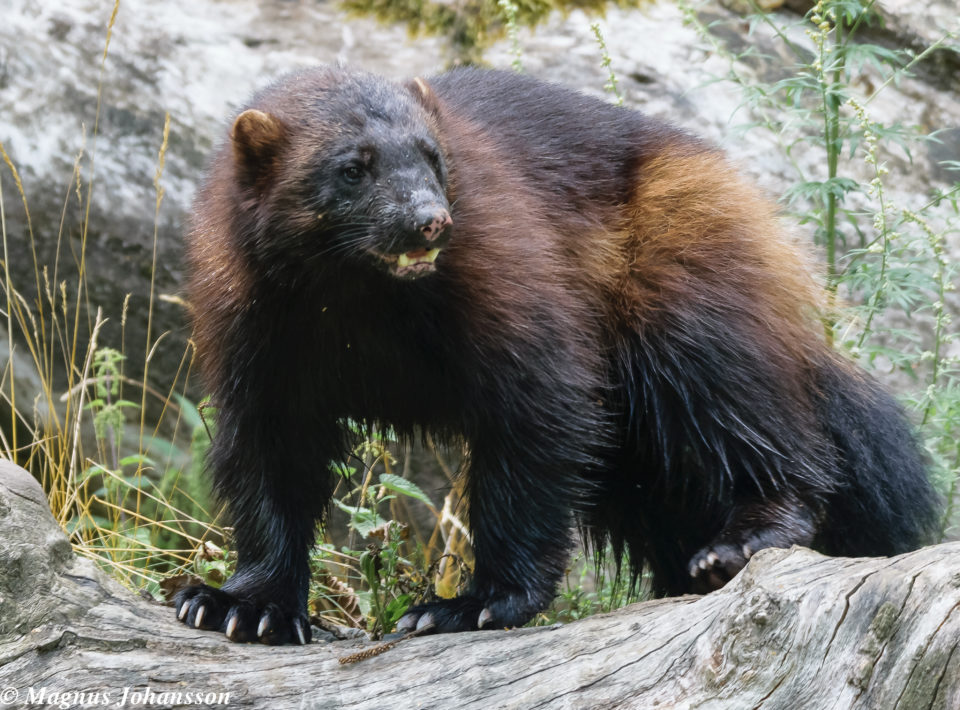
Wolverines will hunt any animals they can find throughout the winter, although there are few that are still active. Their incredible sense of smell helps them find critters beneath the deep snows and animals that have died and been buried in avalanches. Winter provides a range-wide freezer for wolverines to store their extra meat for times when prey is scarce or elusive.
Wolverines also rely on the insulating qualities of snow for their young. Female wolverines give birth in caves dug deep under the snow. They can often have long tunnels leading into multiple chambers. These tunnels can be 6-8 feet under the snow. The young and mothers will use their snowy living quarters until May. Many of us are hoping for warmer weather and melting snow in May, however, the wolverines need thick snowpacks to last into May to help protect their young.
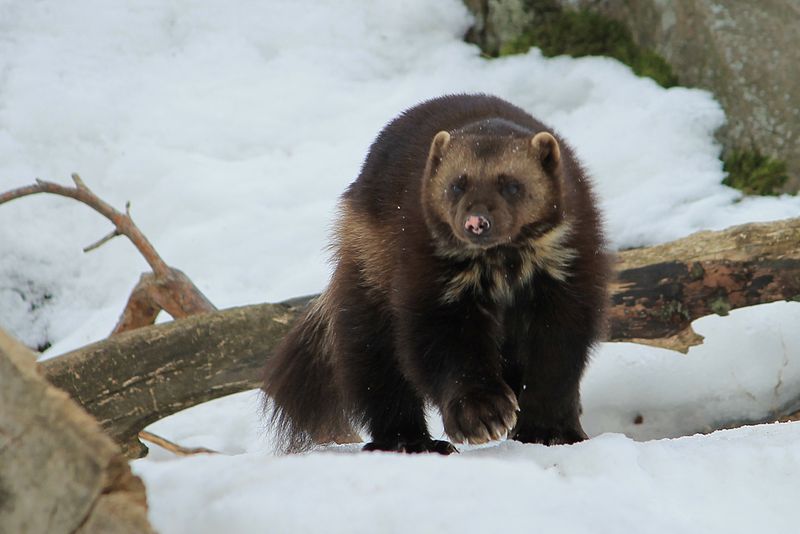
A winter sighting of a wolverine is a once in a lifetime experience. There are only an estimated 300 wolverines left in the contiguous United States, making them rare to begin with. Wolverines also have a huge home range. A male’s home range can be more than 240 square miles and they will travel many miles through their territory in a day. Their huge range makes it even more unlikely you will see a wolverine. You may think wolverines are not even here in the Sawtooths but they happily roam our mountains and a lucky few have encountered one here or there over the years.
So pika look like mice or hamsters but are rabbits; wolverines look like a little bear but are in the weasel family; and mountain goats, look like goats and have ‘goat’ in their name, but they are actually members of the antelope family. Humans make nature confusing! But it’s no surprise that mountain goats can endure winter in the Sawtooths. They have a thick coat that consists of two layers. The fur close to their bodies is soft and wooly like a sheep, and their outer coat is made of long, thick guard hairs that cover the wooly fur and protect from wind, rain, and snow.

Wolverines have crampon claws for the snow and ice and mountain goats have climbing shoe hoofs for the rocks. Each hoof has a hard outer shell and a rubbery foot pad that helps them grip the rocks and lets them move with agility on high cliffs. While most ungulates, like deer, elk, and pronghorn, migrate to lower elevations and warmer areas, mountain goats don’t leave the high mountainsides. They may move to slightly lower elevations or south-facing slopes but they rarely leave their alpine habitat. The south-facing slopes have faster melting snow and less snow means food is easier to find.
Most goats live to about 11 years, spending 11 winters in these high, cold areas. They have very few predators because they live up where few other animals can travel. A mountain goat’s biggest threats are accidentally slipping and falling, avalanches, and sometimes lack of food in a harsh winter. These magnificent animals never leave our mountainous region and can be found year-round if you are brave enough to travel into cold and high elevations.
While it is unlikely you will encounter a pika, wolverine, or mountain goat if you visit the Sawtooths in winter, you could actually spot a few of our winter birds. Clark’s nutcrackers generally live at higher elevations than the Sawtooth Valley but they can be seen year-round in the valley. Clark’s nutcrackers are a member of the corvid (not COVID) family. Crows, ravens, jays, and magpies are also in the corvid family. Clark’s nutcrackers are opportunistic feeders. This means they will eat what they can find including small animals, insects, and carrion. However, their main food source is pine nuts and other conifers’ seeds.
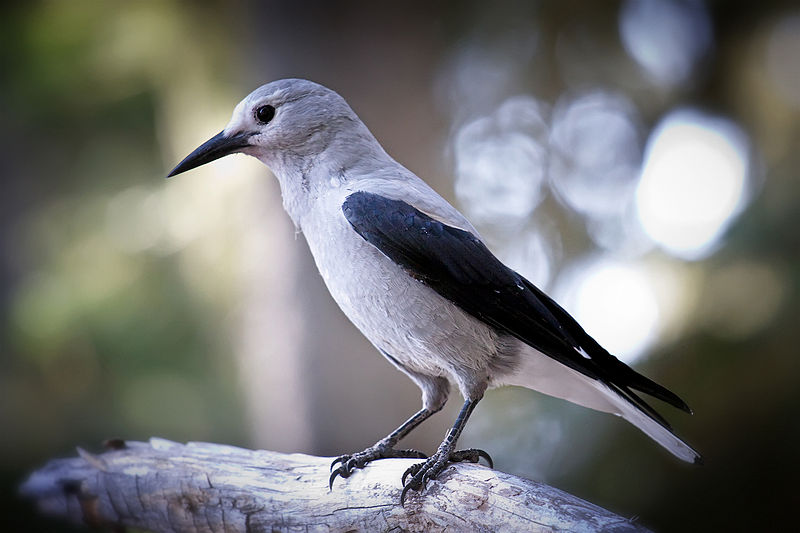
Clark’s nutcrackers have a mutualistic relationship with our local pine species the whitebark pine. This relationship is incredibly important for the survival of our threatened whitebark pines. The nutcracker is one of the few animals that can break into the cones to access the seeds inside. The Clark’s nutcracker’s method of surviving the winter is to cache food. They cache seeds in crevices in bark, under rocks, logs, and buried in gravely soil. They have an incredible ability to remember where they have cached seeds, however, they won’t remember where all their caches are. This supports the whitebark pine by planting seeds throughout the mountains. Those forgotten seeds will grow into new trees. Without the Clark’s nutcracker, the whitebark pine would not be able to produce new young trees or regrow areas disturbed by fire or avalanche.
These clever birds may move up and down in elevation a little bit with the seasons but will reside in the Sawtooths year-round. Snow is not a problem for them as they can still forage for many of the cones still on trees and find their caches even when buried under deep snow.
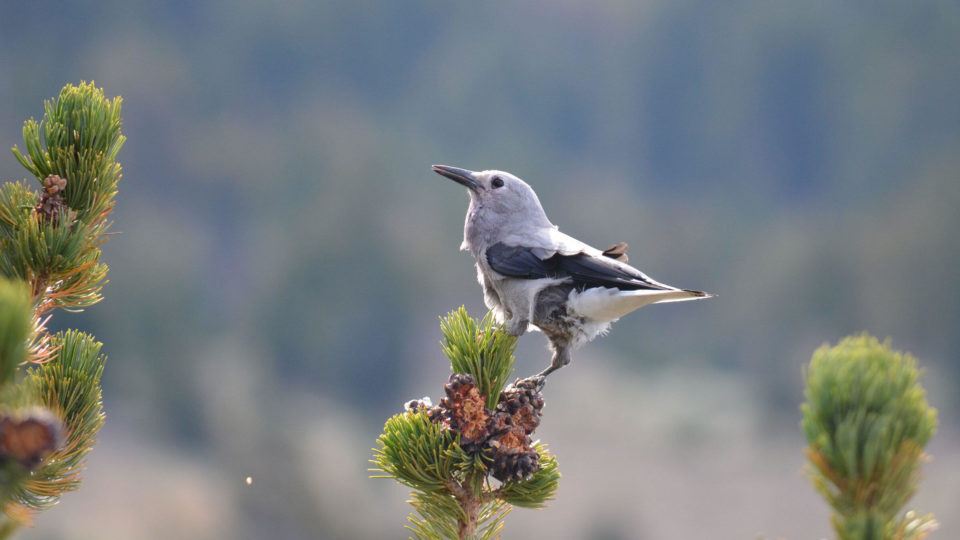
Ravens, another corvid, also spend their winters here in the Sawtooths. In the winter, ravens tend to gather in large groups to roost at night. There is support in large numbers especially when it comes to more sets of eyes on the look out for predators. Throughout the winter they primarily feed off of carcasses that large predators killed. When one raven finds a carcass they will return to the roost and the next morning show the whole flock to the fresh dinner buffet. Because ravens have a larger body size than many little songbirds they have a slightly easier time conserving heat and energy in the depths of winter. Crows, like the Clark’s nutcracker and other corvids, will also cache food to dig up and eat later.

Through the long cold winter in the Sawtooths it may seem that there is no life out and about. Most of our animals have left for warmer weather, or are deep underground hibernating, but there are a few animals who brave the ice, snow, wind, and cold and endure the winter season awake and active. These creatures have evolved to put on extra layers, store food, and be incredibly tough and resilient.
We’ve highlighted just a few here. Snowshoe hares, chickadees, gray wolves, foxes, weasels, and so many more also make the Sawtooths their year-round home. As you gaze across the snowy mountains, know that there are pika nibbling on their hay, mountain goats up high on the hillsides blending in to the white snow with fluffy white coats, wolverines slipping over the passes and peaks, and nutcrackers and ravens soaring high above it all.
Hannah Fake was the Lead Naturalist for the Sawtooth Interpretive and Historical Association for two seasons and now works for the Forest Service in the SNRA. She spends almost all her free time roaming the mountains and valleys on the lookout for any local wildlife.
Sources:
https://www.allaboutbirds.org/guide/Clarks_Nutcracker/overview
https://commons.wikimedia.org/wiki/File:A_wolverine_%2814794534724%29.jpg
https://commons.wikimedia.org/wiki/File:Wolverine_%28Gulo_gulo%29,_Korkeasaari.JPG
https://commons.wikimedia.org/wiki/File:Clark%27s_Nutcracker_%28Nucifraga_columbiana%29.jpg
Through the long cold winter in the Sawtooths it may seem that there is no life out and about. Most of our animals have left for warmer weather, or are deep underground hibernating, but there are a few animals who brave the ice, snow, wind, and cold and endure the winter season awake and active. These creatures have evolved to put on extra layers, store food, and be incredibly tough and resilient.
We’ve highlighted a few here but there are many others we’ll tackle next time: snowshoe hares, chickadees, gray wolves, and foxes just to name a few. As you gaze across the snowy mountains, know that there are pika nibbling on their hay, mountain goats up high on the hillsides blending in to the white snow with fluffy white coats, and wolverines submitting the passes and peaks.
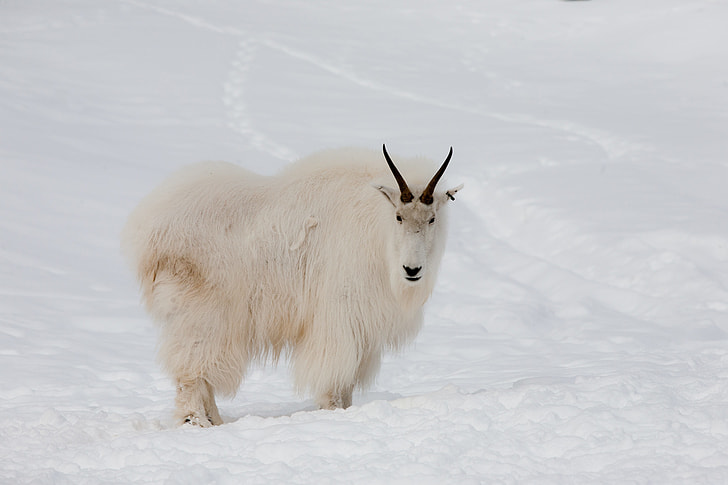
Sources:
https://www.allaboutbirds.org/guide/Clarks_Nutcracker/overview
Winter Series written by Lead Naturalist, Hannah Fake